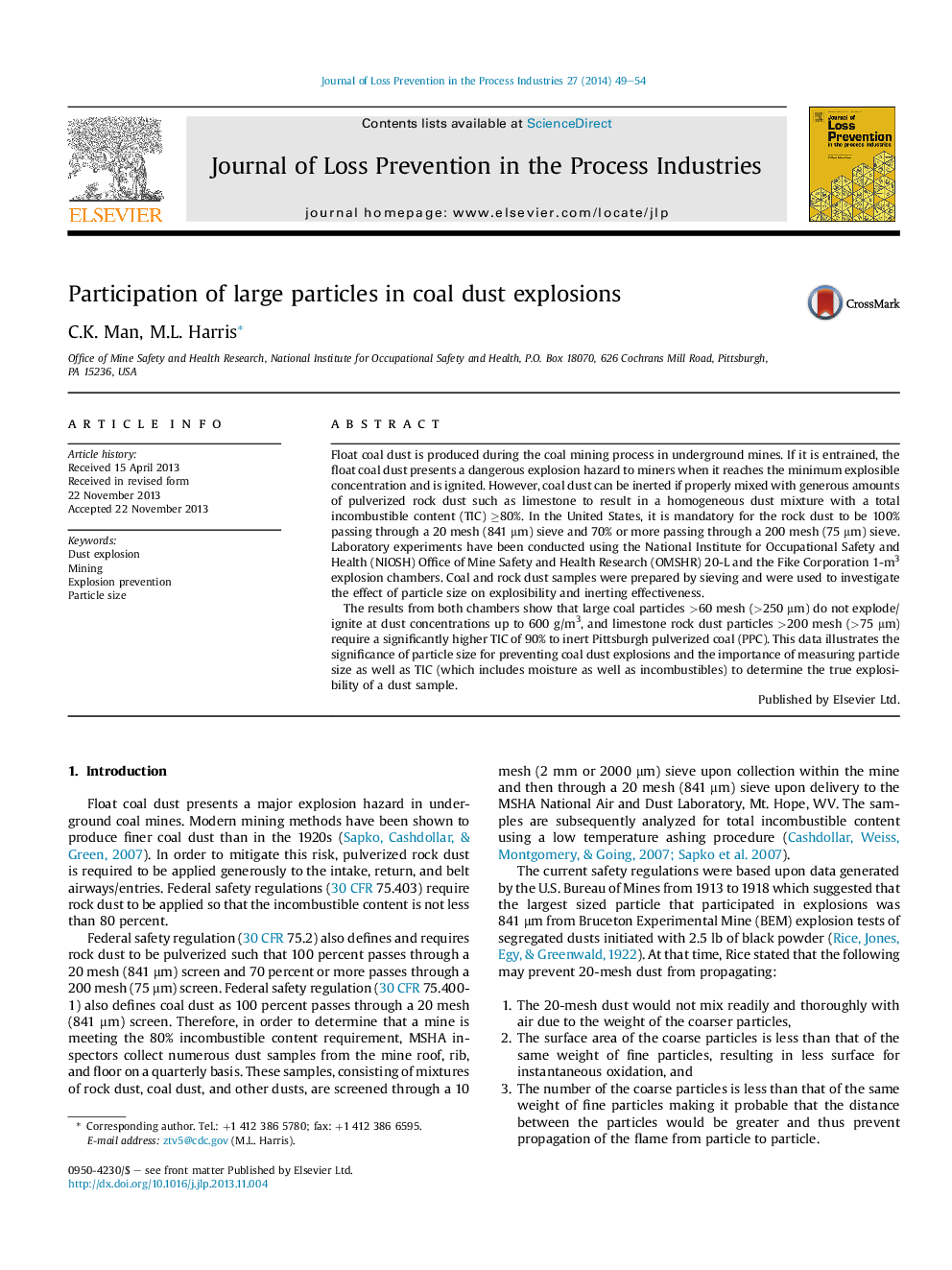| Article ID | Journal | Published Year | Pages | File Type |
|---|---|---|---|---|
| 586341 | Journal of Loss Prevention in the Process Industries | 2014 | 6 Pages |
•We re-examine the role of large particles (>250 μm) in a coal dust/rock dust explosion.•Testing was conducted using a 20-L chamber and a 1-m3 chamber.•Different sized fractions of coal dust and rock dust were examined for their participation in an explosion.•Large coal dust particles (250–841 μm) did not explode in the 1-m3 chamber, even when ‘overdriven.’•Large limestone rock dust particles (250–841 μm) offer almost no protection as an inhibitor in these laboratory tests.
Float coal dust is produced during the coal mining process in underground mines. If it is entrained, the float coal dust presents a dangerous explosion hazard to miners when it reaches the minimum explosible concentration and is ignited. However, coal dust can be inerted if properly mixed with generous amounts of pulverized rock dust such as limestone to result in a homogeneous dust mixture with a total incombustible content (TIC) ≥80%. In the United States, it is mandatory for the rock dust to be 100% passing through a 20 mesh (841 μm) sieve and 70% or more passing through a 200 mesh (75 μm) sieve. Laboratory experiments have been conducted using the National Institute for Occupational Safety and Health (NIOSH) Office of Mine Safety and Health Research (OMSHR) 20-L and the Fike Corporation 1-m3 explosion chambers. Coal and rock dust samples were prepared by sieving and were used to investigate the effect of particle size on explosibility and inerting effectiveness.The results from both chambers show that large coal particles >60 mesh (>250 μm) do not explode/ignite at dust concentrations up to 600 g/m3, and limestone rock dust particles >200 mesh (>75 μm) require a significantly higher TIC of 90% to inert Pittsburgh pulverized coal (PPC). This data illustrates the significance of particle size for preventing coal dust explosions and the importance of measuring particle size as well as TIC (which includes moisture as well as incombustibles) to determine the true explosibility of a dust sample.
